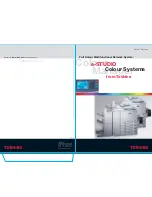
DDL Compiler Commands
Data Definition Language (DDL) Reference Manual — 426798-002
9 -107
TALBOUND Command
DEF number Pic "9(5)". STRUCT NUMBER;
BEGIN STRING BYTE [1:5]; END;
?NOTALALLOCATE
DEF status TYPE ENUM BEGIN. LITERAL NO^ERROR = 0,
89 no-error. READ^ERROR = 1,
89 read-error. WRITE^ERROR = 6;
89 write-error VALUE 6. DEFINE STATUS = INT #;
END.
DEF letter Pic "X". DEFINE LETTER = STRING #;
DEF number Pic "9(5)". STRUCT NUMBER (*);
BEGIN STRING BYTE [1:5]; END;
TALBOUND Command
The TALBOUND command sets the lower bound for pTAL or TAL arrays. This value is
stored in the dictionary with the field or group definition.
TALBOUND 0
assigns any subsequent pTAL or TAL arrays a lower bound of 0.
TALBOUND 1
assigns any subsequent pTAL or TAL arrays a lower bound of 1. TALBOUND 1 is
the default.
TALBOUND Command Guidelines
The following points are guidelines for using the TALBOUND command:
•
You can use the TALBOUND command as often as needed to set different bounds
for different arrays.
•
DDL uses the value specified by the TALBOUND command when it writes an
element to the dictionary. After an element is in the dictionary, changing the
TALBOUND value has no effect on the pTAL or TAL output for that element. To
change the TALBOUND value for an entered element, you must replace the
element in the dictionary.
•
pTAL or TAL arrays are declared for fields and groups described with an OCCURS
clause, for fields described as TYPE CHARACTER, and for all fields described
with an alphanumeric PICTURE.
•
If you specify TALBOUND 0, the array bounds are:
[0:number - 1]
TALBOUNd { 0 | 1 }
















































